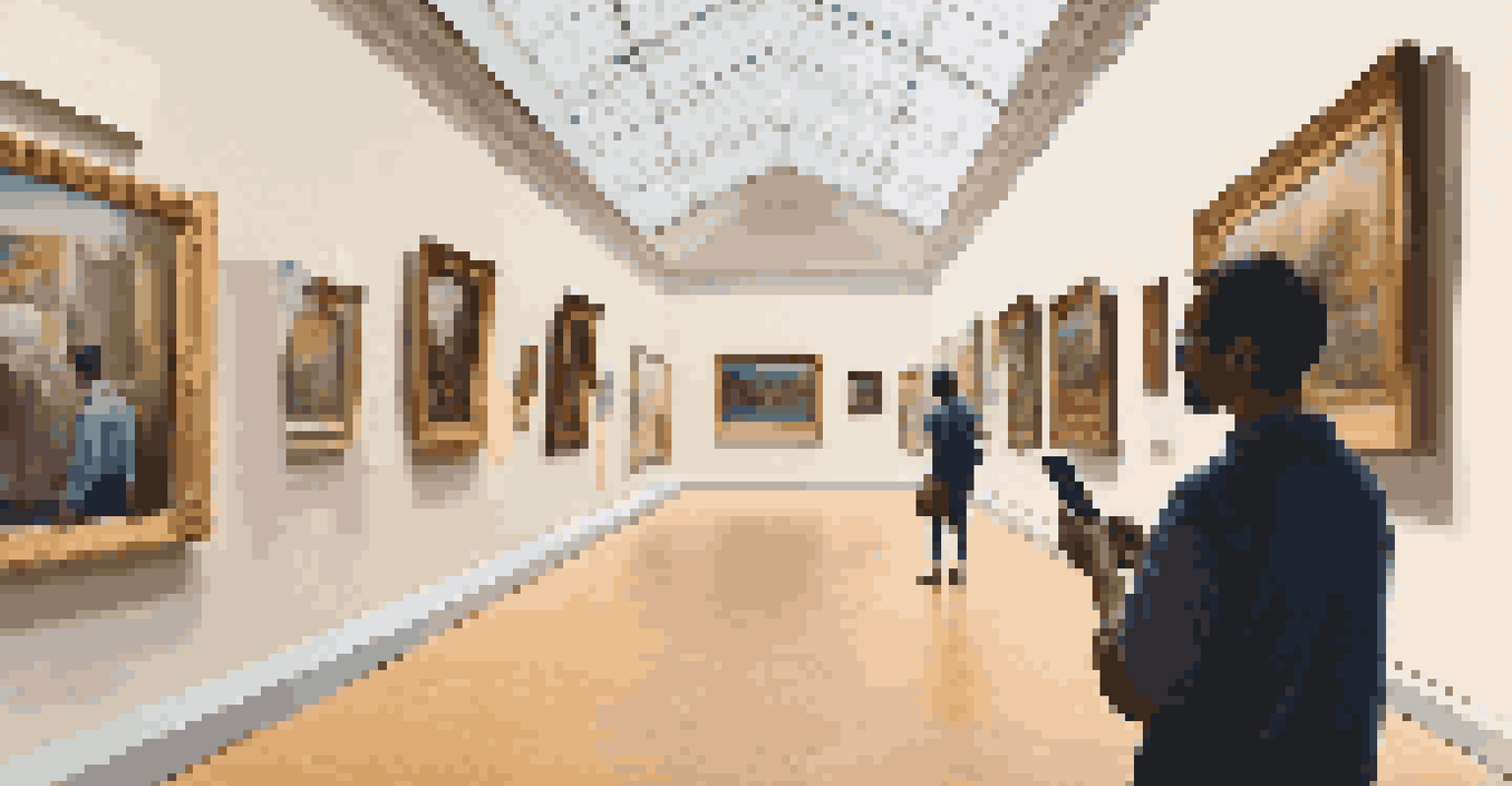Enhancing Travel Experiences with Augmented Reality

What is Augmented Reality and How Does It Work?
Augmented Reality (AR) is a technology that overlays digital information onto the real world. Imagine looking through your smartphone or AR glasses and seeing additional details about the surroundings, like historical facts or translations of signs. This seamless blend of the virtual and physical realms transforms how we perceive and interact with our environments.
Augmented reality will change the way we interact with the world around us.
In simple terms, AR enhances our reality rather than replacing it, allowing travelers to gain richer experiences. For instance, while visiting a historical site, you might see reconstructions of ancient structures right in front of you. This interactive element not only adds value but also deepens your engagement with the location.
As AR technology continues to evolve, its applications in travel are becoming more sophisticated. From mobile apps to smart glasses, travelers can now access information and experiences like never before. It's an exciting time, as AR opens the door to a new world of exploration and discovery.
Transforming City Tours with Interactive Guides
Gone are the days of static guidebooks and monotonous audio tours. With AR, city tours can be transformed into interactive adventures that captivate and engage. Imagine walking through a city and pointing your device at a monument to see historical reenactments or hear stories narrated by virtual characters.

These interactive guides provide context and entertainment, enhancing the overall experience. Instead of simply reading about a landmark, you can visualize its history and significance through immersive storytelling. This not only makes the experience more enjoyable but also aids in better retention of information.
AR Enhances Travel Experiences
Augmented Reality enriches travel by blending digital information with the real world, providing interactive and immersive experiences.
Moreover, AR city tours can be tailored to individual interests, allowing travelers to choose their own paths. Whether you're a history buff or a foodie, there’s an AR tour that caters to your preferences, making every trip feel personal and unique.
Augmented Reality in Museums and Cultural Sites
Museums and cultural sites are embracing AR to enhance visitor experiences. Picture this: you walk into an art gallery and, through your smartphone, you can see an artist's creative process unfold in vivid detail. This layer of information allows for a deeper understanding of the artwork and its context.
The future is already here — it's just not very evenly distributed.
AR applications in museums can offer guided tours, interactive exhibits, and even 3D reconstructions of artifacts. This technology invites visitors to engage with pieces in ways that were previously unimaginable. For example, imagine viewing a dinosaur skeleton and, with a simple tap, seeing it come to life in its natural habitat.
By bridging the gap between the past and present, AR encourages visitors to connect emotionally with history and culture. It not only makes learning fun but also fosters a sense of wonder and curiosity about our world.
Augmented Reality for Language Translation and Navigation
Navigating a foreign city can be daunting, especially with language barriers. AR technology can simplify this process by providing real-time translations of signs and menus. Just point your device at any text, and voilà – instant understanding!
This feature not only enhances convenience but also empowers travelers to immerse themselves in local cultures. Instead of avoiding interactions due to language differences, you can engage with locals and ask questions confidently. This builds a more authentic and enriching travel experience.
Personalized Recommendations in AR
AR technology offers tailored travel suggestions based on individual interests, helping travelers discover unique attractions and activities.
Additionally, AR navigation can guide you through unfamiliar places, making it easy to find attractions or restaurants. Imagine walking down a street and seeing directional arrows overlaying your view, leading you to your destination. This practical application of AR ensures that you can explore without feeling lost.
Personalized Travel Recommendations through AR
Another exciting aspect of AR in travel is its ability to offer personalized recommendations. Based on your preferences, AR apps can suggest nearby attractions, restaurants, and activities that align with your interests. This tailored approach enhances your travel experience by ensuring you discover hidden gems.
For example, if you're an art lover, your AR application might highlight local galleries or street art installations as you wander. This level of personalization helps travelers curate their itineraries in a way that resonates with them, making every moment count.
Moreover, these recommendations can be updated in real-time, ensuring that you’re always in the loop about what’s happening around you. This dynamic interaction fosters a sense of spontaneity and adventure, allowing you to explore a destination like a local.
Enhancing Safety and Accessibility with Augmented Reality
Safety is a top priority when traveling, and AR can play a crucial role in enhancing it. For instance, AR applications can provide alerts about nearby hazards or suggest safer routes, especially in unfamiliar areas. This added layer of awareness can significantly improve a traveler's sense of security.
Furthermore, AR can enhance accessibility for individuals with disabilities. By providing audio descriptions of surroundings or visual aids for navigating public transport, AR ensures that everyone can enjoy their travel experiences. This commitment to inclusivity is essential in making travel accessible to all.
Safety and Accessibility through AR
AR applications enhance safety by alerting travelers to hazards and improving accessibility for individuals with disabilities.
In essence, AR not only makes traveling more enjoyable but also safer and more inclusive. By addressing these critical factors, it helps create a more welcoming environment for every traveler.
The Future of Travel: AR and Beyond
As we look to the future, the possibilities of AR in travel are boundless. With advancements in technology, we can expect even more immersive experiences that redefine how we explore the world. Imagine virtual reality blending with augmented reality, creating fully interactive environments tailored to your travel preferences.
Moreover, as AR becomes more mainstream, we can anticipate more businesses adopting this technology, from hotels offering virtual tours to airlines enhancing in-flight experiences. This shift will likely transform the entire travel industry, making it more engaging and customer-focused.

Ultimately, the integration of AR in travel promises to create richer, more meaningful experiences. By embracing this innovative technology, travelers can discover a world filled with wonder and adventure, changing the way we see travel forever.